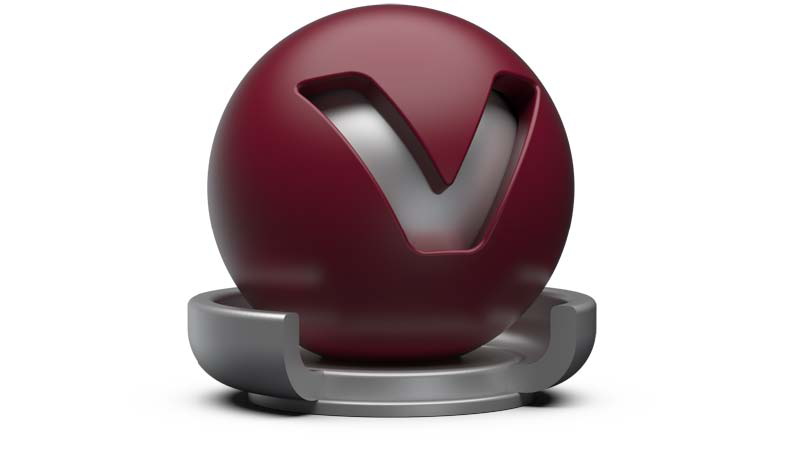Plastic
![]() +
+ ![]()

Plastic is suitable for simulating shiny or glossy surfaces from objects that are made of synthetic materials.
Plastic Material
Diffuse Color - Defines the base color by setting the diffuse reflection color. This is the color the shader takes on when the light reflection of the surface is spread in many directions. Use the slider to change the brightness. Click the color field on the right to open the color chooser. Assigning a texture to the diffuse color projects it onto the surface. The appearance is a combination of the defined color and the assigned texture.
Glossy Color - Sets the material’s color for surfaces glossy reflections. Use the slider to change the brightness. Click the color field on the right to open the color chooser. Assigning a texture to the glossy channel defines areas in which different gloss intensities appear with the help of a texture. The glossy color depends finally on both the defined color and the assigned texture file.
Roughness - The roughness parameter controls light reflections on top of the surface. The higher the value the rougher the microscopic structure on top of the surface and the more diffuse are the reflections.
Reflectivity - Controls the intensity of reflection on the surface. The higher the value, the more the influence from environment and objects around.
Diffuse Texture
For further information on the Texture settings, refer to the General Truelight Material Diffuse Texture section.
Triplanar mappings use three values, X, Y, and Z, instead of two with UVs. In the Realistic tab > Diffuse Texture section of a plastic material, enable Use Texture and click the folder icon to upload a picture file. Now, you can access the Mapping Type option and set it to Triplanar. Set the texture size, then use the X, Y, and Z Repeat UV, Offset UV, and Rotate values to align the texture and make individual changes.
Clearcoat
This section contains options for setting clearcoat attributes for the plastic material. Use this when looking for a material to build an interior decor with wood materials.
Type - Defines the intensity of a reflection based on the viewing angle. Its intensity at normal incidence is set by the material's reflectivity. Choose from the following:
- Off - Turns off the clearcoat.
- Fast - Uses a fast but less accurate approximation to the Fresnel Term (Schlick approximation) to create the clearcoat layer.
- Accurate - Uses a physically accurate evaluation of the Fresnel Term (Cook-Torrance approximation) to create the clearcoat layer.
Refraction Index - Sets the material's refraction index. The index of refraction allows glass-on-glass contact situations. It shows the amount the rays are reflected off the surface versus absorbed (refracted into the surface).
Density - The concentration of the layer’s particles. Use this in conbination with Thickness and a non-white color, as white is completely transparent.
Use Orange Peel - Applies a bump structure to the layer. Use the following options to customize this:
- Orange Peel Frequency - Sets the bump structure's noise frequency. The higher the value, the closer together the orange peel bumps.
- Orange Peel Intensity - Sets the bump structure's intensity. The higher the value, the more visible the orange peel and less smooth the clearcoat surface.
Sheen
![]()
This section contains options for setting the X-Rite and Substance Sheen material attributes.
- Use Sheen - When on, a multi-scattered sheen layer gets added on top of any other layers.
- Weight - Sets the amount of sheen applied. The higher the value the more the sheen.
- Roughness - Sets the randomness of the sheen's fiber orientation. The higher the value the more random the fibers are oriented.
- Color - Sets the color of the sheen.
- Use Texture - When on, you can use a texture file for the sheen. Click the Open File Browser icon and locate the texture file. More options appear for modifying the texture placement and size. See the General Truelight Material Diffuse Texture section for more information on texture settings.
Bump Texture
Bump mapping enables the creation of structure to the materials surface. The Bump slider controls the height of that effect. A higher value results in more depth structure. If a texture is assigned to the bump map channel, it is used as a pattern figure on surface illustration. If no texture is assigned, a default noise map is used instead; Structure Size affects then scale.
For further information on the other attributes, see the following:
